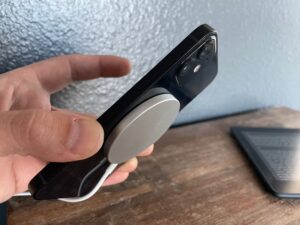Can you bring portable batteries on a plane? The answer is a resounding yes! In this day and age, where our reliance on electronic devices is almost second nature, portable batteries have become a necessary companion for most travelers. Whether you’re headed on a business trip or a much-needed vacation, having a portable battery to keep your devices powered up is essential. But before you start packing your bags and loading up on batteries, there are a few important things you need to know. In this article, we’ll explore the rules and regulations surrounding portable batteries on planes, as well as some handy tips to ensure a hassle-free journey. So, if you’ve ever wondered about the dos and don’ts of bringing portable batteries on a plane, look no further! We’ve got you covered.
Can You Bring Portable Battery on a Plane?
Traveling by plane can be both exciting and stressful, especially when it comes to packing and ensuring you have everything you need for your trip. One common concern that many travelers have is whether they can bring portable batteries on a plane. With the increasing reliance on electronic devices, portable batteries have become essential for many people. In this article, we will explore the regulations and guidelines regarding bringing portable batteries on a plane to help you travel confidently and hassle-free.
Understanding Portable Battery Types
Before diving into the regulations, it’s important to understand the different types of portable batteries. There are generally two types:
1. Primary Batteries: These are non-rechargeable batteries, such as alkaline or lithium disposable batteries. They are commonly used in devices like remote controls, flashlights, and small electronics. Primary batteries are generally not a concern when it comes to air travel, as they are allowed in both checked baggage and carry-on bags.
2. Secondary Batteries: These are rechargeable batteries, commonly found in smartphones, laptops, tablets, and other portable electronic devices. Secondary batteries can be further classified into three main types:
a. Lithium-ion (Li-ion) Batteries: These are the most common type of rechargeable batteries found in consumer electronics. They offer high energy density and are lightweight, making them popular choices for portable devices.
b. Lithium Polymer (Li-Po) Batteries: Li-Po batteries are similar to Li-ion batteries but have a different electrolyte composition. They are commonly found in smartphones, tablets, and portable power banks.
c. Nickel Metal Hydride (NiMH) Batteries: NiMH batteries are commonly used in cameras, toys, and other devices. They have a higher self-discharge rate compared to Li-ion batteries.
Regulations and Guidelines for Carrying Portable Batteries on a Plane
When it comes to carrying portable batteries on a plane, it’s crucial to adhere to the regulations set by aviation authorities. Let’s explore the guidelines established by the International Civil Aviation Organization (ICAO) and the International Air Transport Association (IATA):
Carrying Batteries in Carry-on Bags
Carrying portable batteries in your carry-on bag is generally allowed, but there are certain limitations and restrictions to keep in mind:
– For lithium-ion and lithium polymer batteries:
– The rated energy for each battery should not exceed 100 watt-hours (Wh).
– You are allowed to carry up to 15 spare batteries of less than 100 Wh, but they must be individually protected to prevent short circuits.
– For nickel metal hydride (NiMH) batteries:
– These batteries are generally allowed in carry-on bags without any specific limitations or restrictions.
– It is recommended to place batteries in their original packaging or use protective cases to prevent short circuits.
Carrying Batteries in Checked Baggage
While carrying batteries in your carry-on bag is generally permitted, the rules for checking them in your baggage are more stringent due to safety reasons. Here are the guidelines to follow:
– Lithium-ion and lithium polymer batteries:
– Batteries installed in electronic devices (like smartphones and laptops) are allowed in checked baggage.
– Spare batteries must be carried in carry-on bags and should meet the same restrictions mentioned above.
– If the total energy of the batteries exceeds 100 Wh but does not exceed 160 Wh, you need to get approval from the airline in advance.
– Nickel metal hydride (NiMH) batteries:
– These batteries are generally allowed in checked baggage without any specific limitations or restrictions.
Tips for Safe Handling of Portable Batteries during Air Travel
While the regulations provide guidance on carrying portable batteries, it’s also important to handle them safely to ensure a smooth journey. Here are some tips to keep in mind:
1. Always keep batteries in the original packaging or use protective cases to prevent short circuits.
2. If the battery terminals are exposed, tape them to insulate and protect them from accidental contact.
3. Avoid storing loose batteries with metal objects, as they can potentially short-circuit.
4. If you are carrying spare batteries, keep them in individual plastic bags or use separate compartments in your bag to prevent contact with other metallic objects.
5. Be cautious of extreme temperatures. Avoid exposing batteries to excessive heat or cold during your journey.
6. If you notice any damage or swelling in a battery, do not use it and seek assistance from airport authorities.
Frequently Asked Questions (FAQs)
Here are some frequently asked questions regarding carrying portable batteries on a plane:
Q1: Can I bring a power bank on a plane?
A1: Yes, you can bring a power bank on a plane, but there are restrictions on the energy rating. Ensure that the power bank’s energy rating does not exceed 100 watt-hours.
Q2: Can I bring spare batteries in my checked baggage?
A2: Spare lithium-ion or lithium polymer batteries cannot be packed in checked baggage. They should be carried in your carry-on bags with appropriate protections.
Q3: How do I calculate the energy rating of my battery?
A3: The energy rating (in watt-hours) of a battery can be calculated by multiplying the battery’s voltage (in volts) by its capacity (in ampere-hours).
Q4: Are there any limitations on the number of batteries I can carry?
A4: You are generally allowed to carry spare batteries, but there are limitations on the energy rating and the number of spare batteries. Refer to the regulations mentioned earlier for specific guidelines.
In conclusion, you can bring portable batteries on a plane, but it’s important to follow the regulations and guidelines established by aviation authorities. Understanding the types of batteries and their energy ratings is crucial to ensure compliance and safe travel. By taking necessary precautions and handling batteries responsibly, you can enjoy your journey without any hassles. Remember to always check with your airline for specific requirements and updates to stay informed and prepared.
Frequently Asked Questions
Can I bring a portable battery on a plane?
Yes, you are allowed to bring portable batteries on a plane. However, there are certain rules and regulations you need to follow.
What are the restrictions for carrying portable batteries on a plane?
When bringing portable batteries on a plane, the restrictions may vary depending on the type and capacity of the battery. In general, lithium-ion batteries, which are commonly used in portable electronic devices, are allowed in carry-on baggage but not in checked baggage. It is important to check with the airline and familiarize yourself with their specific rules and regulations.
How should I pack my portable batteries for air travel?
When packing portable batteries for air travel, it is recommended to keep them in their original packaging or cover the battery terminals with electrical tape to prevent short-circuiting. Additionally, it is advisable to place them in individual plastic bags or use a dedicated battery case to prevent accidental activation or damage during transit.
What is the maximum capacity allowed for portable batteries on a plane?
The maximum capacity allowed for portable batteries may vary depending on the airline and the country you are traveling to or from. In general, most airlines permit portable batteries with a capacity of up to 100 watt-hours (Wh) for lithium-ion batteries or up to 160 watt-hours (Wh) for lithium-metal batteries. It is essential to verify the specific regulations of your airline before traveling.
Are there any additional rules for spare or loose portable batteries?
Yes, some airlines have specific rules for spare or loose portable batteries. It is typically not allowed to pack loose batteries in checked baggage. Instead, they should be carried in your carry-on baggage. It is advisable to place spare batteries in individual plastic bags or use a dedicated battery case to prevent any contact with metal objects that could lead to a short-circuit.
Do I need to declare my portable batteries at the airport security checkpoint?
In most cases, you do not need to declare portable batteries at the airport security checkpoint. However, it is always a good idea to have them easily accessible for inspection if required by the security personnel. It is also essential to follow any instructions given by airport staff regarding the handling of your portable batteries during the security screening process.
Final Thoughts
In conclusion, when it comes to traveling with portable batteries on a plane, it is generally allowed but with certain restrictions. Portable batteries, such as power banks, are permitted in carry-on luggage, but they must meet specific requirements regarding their capacity. Lithium-ion batteries with a capacity of 100Wh or less are usually allowed, while those between 100Wh and 160Wh may require airline approval. It’s essential to check with the airline beforehand and ensure the batteries are properly stored and protected to prevent any accidents or hazards. So, if you’re wondering, “Can you bring portable batteries on a plane?” the answer is yes, but within specific guidelines for a safe and hassle-free journey.


